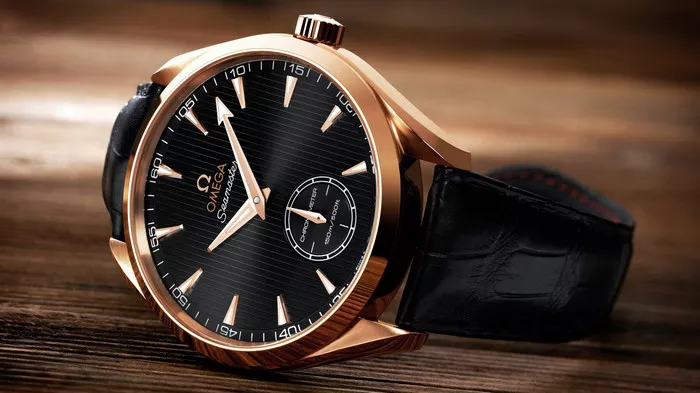The world of horology is a realm of precision, craftsmanship, and timeless elegance. Among the distinguished brands that embody these qualities, Ωmega holds a special place. Yet, pronouncing the name of this renowned watchmaker can leave even seasoned enthusiasts puzzled. In this essay, we will unravel the mystery behind the pronunciation of Ωmega and provide a comprehensive guide to ensure you say it with confidence and finesse.
I. The Enigma of Ω:
The first step towards mastering the pronunciation of Ωmega is understanding the origin and significance of its symbol. The Greek letter “Ω” represents the twenty-fourth and final letter of the Greek alphabet, often associated with perfection, achievement, and the ultimate expression of excellence. In Ωmega, the symbol serves as a testament to the brand’s commitment to producing horological masterpieces.
II. Cracking the Phonetics:
The pronunciation of Ωmega can be broken down into two syllables: “Oh” and “Meh-guh.” Let’s delve deeper into each component to ensure precision.
A. The “Oh” Sound: The first syllable, “Oh,” is an elongated vowel sound. It resembles the exclamation we utter when we experience awe and astonishment. To pronounce it correctly, start by forming an “O” shape with your lips, then produce a prolonged “ooh” sound while keeping your lips rounded and relaxed.
B. The “Meh-guh” Combination: The second syllable, “Meh-guh,” involves two distinct sounds: “Meh” and “guh.” Paying attention to each element will enable you to articulate it accurately.
①The “Meh” Sound: The “Meh” sound is a short, open vowel sound, similar to the pronunciation of the word “met” or “pen.” Position your lips and tongue in a neutral position, allowing the airflow to pass freely through your mouth. Combine this with a soft “eh” sound, ensuring a concise yet audible pronunciation.
②The “Guh” Sound: The final sound, “guh,” requires a voiced velar stop. Position the back of your tongue against the soft part of your palate, near the throat, to momentarily stop the airflow. Release the stop by slightly opening your mouth and producing a gentle “guh” sound.
III. Charming Variations:
Language, regional accents, and personal preferences often lead to slight variations in pronunciation. While “Oh-Meh-guh” represents the standard pronunciation, there are notable alternatives worthy of exploration.
A. The “Oh-May-guh” Variation: Some individuals prefer to emphasize the “a” sound in the second syllable, resulting in a pronunciation of “Oh-May-guh.” This variation adds a touch of melodious elegance, reminiscent of the Italian language, where the letter “e” often sounds like “ay.”
B. The “Oh-Me-ga” Variation: Alternatively, you may encounter the simplified pronunciation of “Oh-Me-ga,” where the final “-guh” sound is replaced with a shorter “-ga” sound. This variation, while less common, is occasionally heard among English speakers who favor brevity.
IV. Practice Makes Perfect:
Now that we have dissected the components of Ωmega’s pronunciation, it is crucial to practice and refine our skills. By implementing the following techniques, you can ensure a confident and polished delivery:
A. Repetition: Repetition is key to mastery. Take time each day to pronounce Ωmega aloud, focusing on the correct articulation of each syllable. Gradually increase the speed and fluidity of your pronunciation, aiming for a seamless and effortless delivery.
B. Audio Resources: Utilize online audio resources, such as language-learning platforms or pronunciation websites, to listen to native speakers pronouncing “Ωmega.” Immerse yourself in the sound and rhythm of the pronunciation, allowing your ear to become familiar with the correct intonation and cadence.
C. Conversational Practice: Engage in conversations about watches, horology, or Ωmega itself. Communicate with fellow enthusiasts, visit watch boutiques, or attend watch-related events where you can discuss the brand. By actively using the name in conversations, you will reinforce your pronunciation skills and gain confidence in expressing yourself fluently.
D. Record and Evaluate: Take advantage of modern technology by recording yourself pronouncing “Ωmega.” Listen to the playback and evaluate your pronunciation. Pay attention to the accuracy of each syllable, intonation, and overall clarity. This self-assessment will help you identify areas for improvement and refine your pronunciation over time.
V. Embracing the Ωmega Heritage:
Beyond its pronunciation, understanding the heritage and significance of Ωmega elevates your appreciation for the brand. Established in 1848, Ωmega has cultivated a rich legacy rooted in precision and innovation. From the Olympic Games to space exploration, Ωmega has been a trusted companion to explorers, athletes, and style connoisseurs alike.
VI. Conclusion:
Mastering the art of pronouncing “Ωmega” is a gateway to confidently engage with the world of horology and appreciate the exquisite timepieces crafted by this esteemed brand. By breaking down the pronunciation into its phonetic components, practicing diligently, and embracing the variations, you can articulate “Ωmega” with finesse and elegance. Let your voice resonate with the legacy of excellence that Ωmega represents, and become a true connoisseur of horological mastery.
In the realm of horology, where every second counts and precision is paramount, pronouncing “Ωmega” with confidence and accuracy is a testament to your passion and understanding of this iconic brand. Embrace the elegance, immerse yourself in the history, and let your voice be the perfect companion to the timeless beauty of Ωmega watches.

